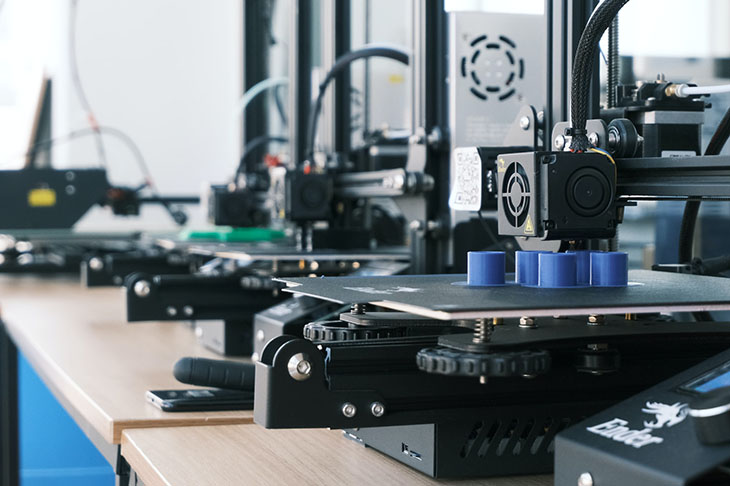Pumps play a vital role in the oil and gas sector for efficient fluid transfer, which is essential for drilling rig operations. There's been an emphasis on developing innovative pump designs that enhance energy efficiency as costs rise and environmental concerns become more pressing. Several methods and technologies have emerged as more companies emphasise protecting the environment, saving money and improving their bottom lines.
Here are some innovations the gas and oil industry employs and why making these improvements is vital.
Innovations for Enhanced Energy Efficiency
What’s the best way to boost pump energy efficiency in the gas and oil industry? There are several different types of equipment that can strengthen output and increase productivity by ensuring smooth operations and reducing expenses.
- Variable speed drives (VSDs): These electronic devices adjust the speed of a pump to meet the specified demand. They greatly reduce energy consumption by pumping only the amount of fluid needed.
- Magnetic drive pumps: Magnetic pump drives eliminate the physical connection between the motor and pump, using magnets to transfer torque. This design reduces the risk of leaks, benefiting the environment.
- Advanced sealing technologies: Mechanical seals and packing can cause friction, leading to energy loss. Advanced sealing technologies aim to reduce it and thereby increase pump efficiency.
- Digital monitoring and IoT integration: Pumps integrated with sensors and connected to a central monitoring system can provide real-time data on performance and efficiency. This enables operators to identify issues immediately and take corrective actions.
- High-efficiency hydraulic designs: New impeller and volute designs that minimise hydraulic losses have emerged. These designs convert the maximum amount of energy to fluid movement.
- Composite materials: Advanced composite materials can reduce the weight and friction of pump components, leading to higher efficiency.
- Downhole electric submersible pumps (ESPs): These pumps are placed deep in the oil well, reducing the energy lost in lifting fluids to the surface. Modern ESPs come with advanced technologies to ensure longevity in harsh conditions.
- Pump cavitation prevention: Cavitation can severely reduce a pump's efficiency and life span. New designs and controls prevent it by ensuring the fluid's pressure doesn’t drop below its vapour pressure.
- Multiphase pumps: These can handle mixtures of gas, liquid and solid components, reducing the need for separate processing steps and pumps for each phase.
- Solar-powered pumps: Solar-powered pumps provide sustainable energy to pumping operations in remote areas, reducing reliance on diesel or electricity from a main grid.
Improving the Energy Efficiency of Oil and Gas Pumps
Optimising pump selection is fundamental. Every application has unique requirements, and selecting a pump that's too large or small can affect efficiency. A pump sized appropriately for its specific use will operate closer to its best efficiency point, ensuring optimal energy use.
Variable frequency drives (VFDs) have emerged as a game-changer in pump efficiency. VFDs modulate the pump's speed to align with demand. They can offer substantial energy savings in systems where the requirements fluctuate by adjusting the pump's operation to match immediate needs.
Maintenance and monitoring routines serve as the foundation of efficient pump operation. Regular checks for wear and tear, maintaining seal integrity and periodic cleanups to remove obstructions are essential. Closely monitoring performance metrics, such as flow rate, pressure and power consumption, enables companies to identify and address anomalies before they escalate.
The heart of many pumps, the impeller, can also be optimised for efficiency. Advanced impeller designs can significantly improve fluid flow and, in certain scenarios, trimming it to precisely meet system demands can lead to energy savings.
Minimising friction losses can considerably improve energy efficiency. This can be achieved by optimising the piping layout, reducing obstructions like bends and elbows, and using larger diameter pipes to ensure smoother fluid movement.
Intelligent control systems with real-time data feeds can modulate operations based on instantaneous requirements. During lulls in demand, these systems can lower pump speeds or shut down redundancies.
The motor driving the pump can be a significant energy consumer. Opting for energy-efficient motors can reduce energy usage. These motors might entail a higher initial investment, but lifecycle energy savings make it worthwhile.
Old Standards, New Efficiency
Many standard pumps used in the oil and gas industry have been used for years and now benefit from upgrades that make them more efficient. These standbys are ideal for various uses in the sector and are employed in many operations.
- Metering pumps: They ensure precise fluid transfer at exact volumes and flow rates. These pumps often use a diaphragm or plunger and are ideal when accuracy is paramount.
- Diaphragm pumps: These pumps are used during the upstream and midstream phases and utilise a diaphragm and valve system. They're wear-resistant due to fewer moving parts but may sometimes face minor operational hiccups.
- Centrifugal pumps: Centrifugal pumps are suitable for low-viscosity fluids and utilise rotating impellers to move oil. They're used in secondary gas/oil recovery and oil shipping. Some centrifugal pumps, like electric submersible pumps, separate oil from water.
- Positive displacement pumps: These pumps use reciprocating or rotating components to create pressure for fluid transfer. These are ideal for high-viscosity fluids during the upstream phase.
- Gear pumps: This subset of positive displacement pumps uses gears to transfer and sometimes clean fluids. External and internal gear pumps have distinct mechanisms and applications.
- Reciprocating plunger pumps: These are common in the industry and pressurise liquid in a cylinder using a piston/plunger. They ensure consistent flow rates and are used in various applications, like saltwater disposal and hydraulic fracturing.
- Progressive cavity pumps: These pumps transfer liquids using a rotor, creating small chambers for fluid movement. They're suitable for high-viscosity fluids and are particularly useful when solid particles are present.
One Step Closer to Sustainability
Improving pump efficiency is economically beneficial for businesses and critical for sustainability and reducing carbon footprints. Implementing strategies that target the core operational aspects of pumps can pave the way for more eco-friendly and cost-effective operations.
As the industry continues to evolve, further innovations are expected in pump design to achieve even higher efficiency levels. Integrating artificial intelligence and machine learning can also provide predictive maintenance capabilities, ensuring pumps operate optimally for longer periods.

























